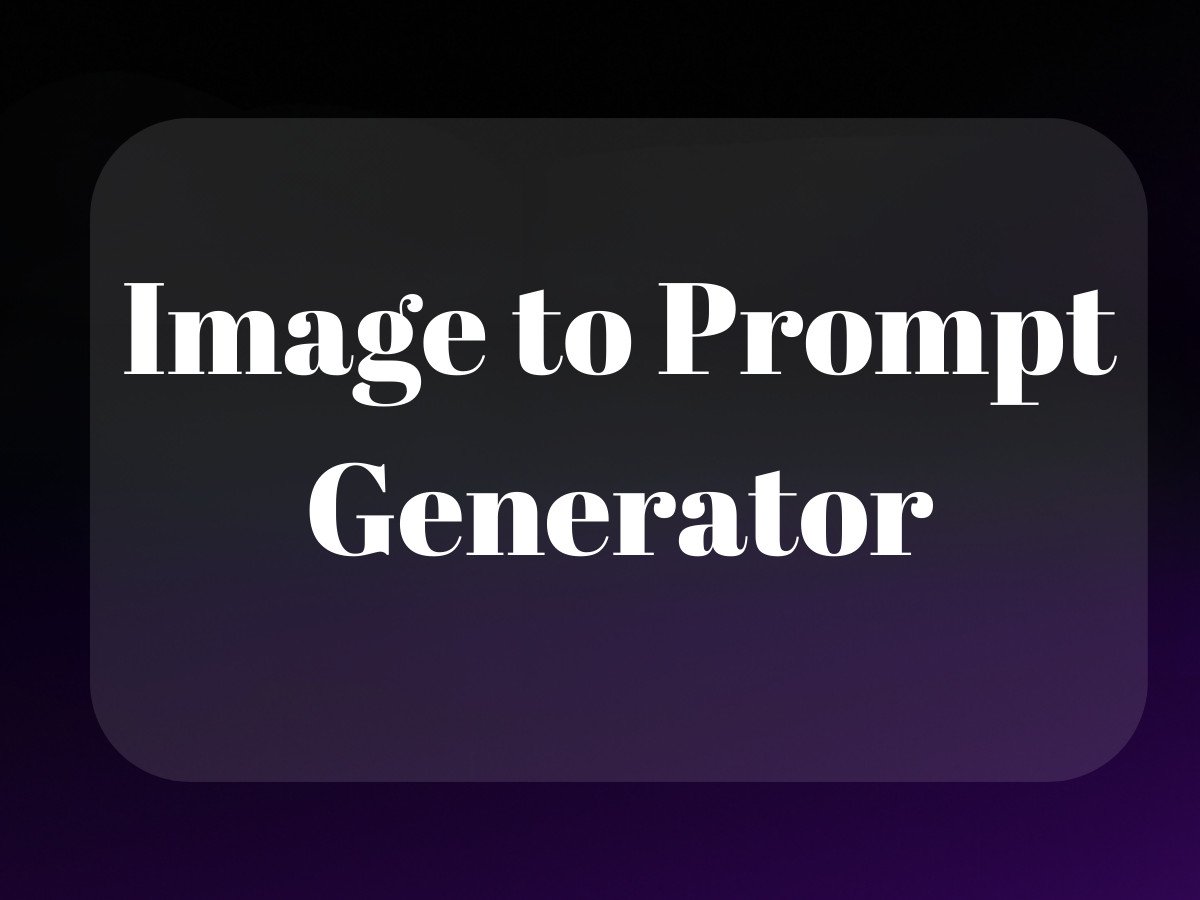The Ultimate Platform Showdown: Understanding Amazon vs eBay in 2024
Let’s be real – choosing between Amazon and eBay feels a bit like picking sides in a tech version of Game of Thrones. Two massive kingdoms, each with their own rules, cultures, and ways of doing business. And just like in GoT, picking the wrong side could mean disaster for your entrepreneurial dreams.
I’ve spent the last decade selling on both platforms (and helping thousands of brands do the same through ProductScope), and I can tell you – it’s not as simple as Amazon is bigger so it must be better” or “eBay has lower fees so that’s the obvious choice.” The reality is delightfully more nuanced.
Platform Evolution: How We Got Here

Remember when Amazon just sold books? When eBay was basically a digital garage sale? Those days feel like ancient history now. Amazon has morphed into “The Everything Store” while eBay has evolved from auction-only to a sophisticated marketplace that handles billions in transactions.
Today, Amazon boasts over 300 million active customers worldwide, with Prime membership hitting 200 million+ globally. eBay isn’t exactly a small player either, with 159 million active buyers globally. But raw numbers only tell part of the story.
Core Platform Differences: More Than Meets the Eye
Business Models That Shape Everything
Amazon operates like a retail-first juggernaut. Think of it as the digital equivalent of a massive shopping mall where Amazon owns the biggest store and rents space to other retailers. They’re obsessed with standardization, control, and Prime shipping speed. Everything – from their fee structure to their listing requirements – flows from this philosophy.
eBay, on the other hand, is more like a giant flea market (but way more organized). They’re marketplace-focused, meaning they don’t compete with their sellers directly. This fundamental difference shapes everything from how they treat sellers to their fee structures.
Target Audience: Prime Members vs Deal Hunters
Here’s where things get interesting. Amazon has effectively created their own shopping class – Prime members. These customers expect fast shipping, hassle-free returns, and are willing to pay a premium for convenience. The average Prime member spends $1,400 annually on Amazon, compared to $600 for non-Prime customers.
eBay’s audience is different. They’re often looking for deals, unique items, or specific collectibles. They’re more patient with shipping times and more willing to deal directly with sellers. It’s not uncommon to find buyers who specifically search eBay for items they can’t find on Amazon – or items they found on Amazon but want at a better price.
Getting Started: The Entry Barriers
Amazon’s Gated Community
Starting on Amazon feels a bit like applying for a mortgage. You need:
– A professional selling plan ($39.99/month)
– UPC codes for your products
– Brand registry (in many categories)
– Approval for restricted categories
– Insurance (in many cases)
And that’s before we even talk about their referral fees, which can range from 8% to 45% depending on the category. Amazon’s not trying to be difficult – they’re trying to maintain quality control. But it does mean higher barriers to entry.
For a detailed comparison between platforms, check out which is the best platform for first-time sellers.
eBay’s Open Door Policy
eBay’s approach is more welcoming to new sellers. You can start selling immediately with just:
– A basic account (free)
– PayPal account
– Valid payment method
– Basic contact information
Their insertion fees are often waived for your first 250 listings each month, and final value fees typically range from 10-15% – generally lower than Amazon’s referral fees. It’s easier to get started, but that also means more competition.
For more insights, explore the pros and cons of selling on each platform.
The Fee Factor: Understanding Your Costs

Amazon’s Fee Structure
Amazon’s fees can feel like death by a thousand cuts. You’ve got:
– Monthly subscription ($39.99)
– Referral fees (category dependent)
– FBA fees (if using Fulfillment by Amazon)
– Storage fees
– Long-term storage fees
– Return processing fees
– Advertising costs (increasingly necessary)
Let’s break this down with a real example. Say you’re selling a $30 toy:
– Referral fee (15%): $4.50
– FBA fee (typical): $5.42
– Monthly subscription portion: ~$0.10
Total fees: $10.02 (33.4% of sale price)
eBay’s Fee Landscape
eBay’s fee structure is simpler:
– Insertion fees (often free)
– Final value fees (typically 10-15%)
– Optional store subscription ($21.95-$299.95/month)
– Payment processing fees (included in final value fees)
Using the same $30 toy example on eBay:
– Final value fee (12.9% + $0.30): $4.17
– Insertion fee: $0 (assuming within monthly free listing quota)
Total fees: $4.17 (13.9% of sale price)
The difference is striking – but remember, with Amazon’s higher fees come built-in fulfillment and customer service if you’re using FBA. It’s not just about the fees; it’s about what you get for them.
Listing Management: Flexibility vs Standardization
This is where the philosophical differences between the platforms really show up. Amazon wants everything in their catalog to look like it came from the same store. eBay gives you the freedom to create listings that reflect your brand’s personality.
On Amazon, you’re often competing for the Buy Box on existing listings. You’ll need to match exact product specifications, use standardized photos, and follow strict title formats. It’s great for buyers who want consistency, but it can feel restrictive for sellers trying to stand out.
eBay gives you more creative control. You can create unique titles, use your own photos, write detailed descriptions in your own voice, and even customize your store’s appearance. This flexibility is perfect for sellers of unique items or those with strong brand identities.
Inventory Management Tools
Both platforms offer robust inventory management tools, but they serve different needs. Amazon’s tools are built around maintaining stock levels and optimizing for the Buy Box. eBay’s tools focus more on listing management and cross-promotion of related items.
The key difference? Amazon’s system is built for scale and standardization, while eBay’s allows for more customization and flexibility. Neither is inherently better – it depends entirely on your business model and what you’re selling.
Platform Overview & Core Differences
Let’s get real about Amazon and eBay for a minute. These two platforms are like those siblings who grew up in the same house but turned out completely different. One became a controlling corporate type (looking at you, Amazon), while the other stayed true to its swap-meet roots (hey there, eBay).
Business Models: Two Very Different Beasts
Amazon’s approach is like that friend who always needs to be in control. They’re not just running a marketplace – they’re building an empire. Their retail-first strategy means they’re often competing with their own sellers, which can feel like playing basketball against the referee. But there’s method to this madness: it’s all about maintaining that iron grip on customer experience.
eBay, on the other hand, is more like that chill friend who lets you do your own thing. Their marketplace-focused model is purely about connecting buyers and sellers, without trying to be the star of the show. They’re not interested in competing with their sellers – they just want to facilitate the party.
Target Audience: Prime Members vs. Deal Hunters
Amazon’s customer base is essentially a cult of convenience. These are the people who’d rather pay a premium than wait an extra day for delivery. They’re Prime members who’ve bought into the ecosystem so deeply that checking other sites feels like cheating. The referral fee and various Amazon fees might be steep, but sellers get access to these ready-to-buy customers.
eBay’s crowd? They’re more like treasure hunters. These folks don’t mind scrolling through pages of used items or waiting a bit longer if it means scoring a deal. They’re collectors, bargain hunters, and people who get a kick out of finding that perfect fixed price listing that no one else has spotted yet.
Selling Experience Comparison: The Nitty-Gritty

If Amazon vs eBay were a movie, this would be where we do the side-by-side comparison montage. Let’s break it down.
Getting Started: Barriers to Entry
Starting on Amazon is like applying for a corporate job. You need proper documentation, a professional selling plan if you’re serious, and the patience to navigate their labyrinthine rules. It’s not just about listing products – it’s about proving you’re worthy of the Amazon badge.
eBay’s more like setting up shop at a flea market. Create an account, verify some basic info, and you’re pretty much good to go. The barrier to entry is so low, you could start selling those old pee pads from when you were puppy training (yes, that’s a real thing people sell).
Pricing Structures: The Money Talk
Amazon’s fee structure is like a fancy restaurant menu – complicated and potentially expensive. You’ve got your monthly subscription fees, referral fees that vary by category, FBA costs if you go that route, and various other charges that can eat into your margins faster than a hungry teenager at a buffet.
eBay’s pricing is more straightforward, though not necessarily cheaper. You’ve got insertion fees (though you get some free listings), final value fees, and optional store subscription costs. The key difference? You have more control over your costs, and the fees are generally more predictable.
For more insights on which platform might suit your needs, consider reading which is better for first-time sellers.
Listing Management: Control vs. Freedom
Amazon’s catalog system is like a strict librarian – everything must be categorized just so. If you’re selling something that already exists in their catalog, you’re stuck using their listing. Want to sell come play board games? You’ll need to fit into their existing product pages.
eBay gives you the creative freedom of an art studio. You can create your listings from scratch, use your own photos, write your own descriptions, and really let your brand personality shine. This flexibility is particularly valuable for unique or used items where condition and details matter.
Product Categories & Specializations
Here’s where the rubber meets the road in the amazon vs ebay debate. Each platform has its sweet spots, and knowing them is key to choosing where to sell.
Amazon’s Bread and Butter
Amazon excels with new, branded products. They’re the go-to for that fresh-out-of-the-box experience. Think:
– Brand-name electronics still in their original packaging
– New books (they started here, after all)
– Consumer packaged goods
– Standardized products where condition isn’t a major factor
Meanwhile, if you’re looking into selling on platforms like Etsy, the dynamics shift significantly.
eBay’s Secret Sauce
eBay shines when it comes to unique, used, or collectible items. Their platform is perfect for:
– Vintage collectibles
– Used electronics
– Rare items
– Custom or handmade products
– Parts and replacements
– Items that need detailed condition descriptions
Fulfillment & Logistics: The Delivery Showdown
This is where Amazon vs eBay which is safer becomes a relevant question, especially for sellers worried about shipping headaches.
Amazon’s FBA Empire
Fulfillment by Amazon (FBA) is like having a personal assistant who handles all your shipping. They store your products, pack them, ship them, and even handle returns. It’s convenient but comes at a cost – both financially and in terms of control. You’re essentially handing over a significant part of your business to Amazon.
The benefits are clear: Prime eligibility, professional handling, and the ability to scale without worrying about warehouse space. But the costs can add up, especially for larger items or slow-moving inventory.
eBay’s DIY Approach
eBay’s fulfillment is more of a choose-your-own-adventure story. You can handle shipping yourself, use their Global Shipping Program for international sales, or integrate with third-party fulfillment services. This flexibility means you can optimize your shipping strategy based on your specific needs and margins.
The downside? You’re responsible for more moving parts. But for many sellers, especially those dealing in unique or fragile items, this control is actually a benefit. When asking ebay vs amazon which is safer for shipping valuable items, eBay’s flexibility often wins out.
The reality is, when it comes to why sell on amazon vs ebay, there’s no one-size-fits-all answer. It’s about understanding your business model, your products, and your tolerance for corporate oversight versus independence.
Seller Tools & Resources: What Each Platform Offers

Look, as someone who’s built tech tools for ecommerce sellers, I can tell you that the analytics and marketing capabilities of these platforms can make or break your business. The tools Amazon and eBay provide aren’t just nice-to-haves – they’re essential for scaling.
Marketing Features That Actually Move the Needle
Amazon’s advertising platform is like having a seasoned marketing intern who knows exactly where to place your products. Their Sponsored Products and Sponsored Brands options give you precise targeting capabilities that, frankly, eBay can’t match. But here’s the thing – eBay’s Promotions Manager and Promoted Listings have their own charm, especially for unique items or used products where buyer intent is different.
I’ve seen sellers struggle with Amazon’s PPC (pay-per-click) learning curve, but once you get it, it’s like printing money. eBay’s promotional tools are more straightforward – think of them as traditional retail marketing tactics translated for the digital age.
Analytics That Tell You What’s Really Happening
Both platforms offer analytics, but Amazon’s data depth is honestly pretty wild. You get access to everything from conversion rates to competitive price analysis. It’s like having a Bloomberg terminal for your product listings. eBay’s Seller Hub provides solid basics, but it’s more like getting the highlight reel rather than the full game footage.
For sellers looking to enhance their listings, tools like ChatGPT for Amazon descriptions can be invaluable.
Financial Considerations: The Real Cost of Selling on Amazon vs eBay
Let’s talk money – because at the end of the day, that’s what matters. The referral fee structure on Amazon can eat into your margins faster than a New York pizza slice disappears at lunch hour. But there’s a reason sellers put up with it.
Profit Margins: The Numbers Game
Amazon’s fees are higher – we’re talking about referral fees ranging from 8% to 45% depending on the category. Add FBA costs, and you might wonder if it’s worth it. But here’s the kicker: Amazon’s conversion rates are typically higher, which can offset these costs. eBay’s final value fees are generally lower, maxing out around 12.55% for most categories, making it more attractive for lower-margin items.
For those curious about alternative platforms, you might consider checking out the comparison between Temu and Shein for different selling opportunities.
Payment Systems: Getting Your Money
Amazon’s payment processing is like a well-oiled machine – predictable, regular deposits every two weeks. eBay’s managed payments system has come a long way, but it still feels like it’s playing catch-up sometimes. Both platforms handle currency conversion for international sales, but Amazon’s rates tend to be more competitive.
Future Outlook: Where These Platforms Are Headed
As someone deep in the ecommerce tech space, I can tell you that both platforms are investing heavily in AI and automation. Amazon’s been experimenting with everything from drone delivery to automated pricing algorithms. eBay’s focusing more on image recognition and improved search capabilities.
Platform Evolution: The AI Revolution
Amazon’s pushing hard into AI-powered inventory management and customer service tools. They’re basically turning their platform into a giant optimization engine. eBay’s taking a different approach, using AI to better match unique items with potential buyers – think of it as a dating app for products and collectors.
Growth Opportunities: The Next Frontier
Both platforms are eyeing emerging markets, but their approaches couldn’t be more different. Amazon’s building infrastructure and logistics networks from scratch, while eBay’s leveraging existing systems and focusing on cross-border trade. The opportunity for sellers is in identifying which approach aligns better with their business model.
Making the Choice: A Framework for Decision

Here’s the framework I use when advising brands: It’s not about which platform is better – it’s about which one fits your business model better. If you’re selling new, standardized products with healthy margins, Amazon’s your game. If you’re dealing in unique, used, or customized items, eBay might be your better bet.
Decision Framework: The Checklist
- Product type (standardized vs unique)
- Margin requirements (can you absorb higher fees?)
- Fulfillment capabilities (do you need FBA?)
- Customer service bandwidth (can you handle direct customer communication?)
- Long-term scalability goals
The Hybrid Approach: Why Not Both?
Here’s a hot take: the amazon vs ebay debate doesn’t have to be either/or. Many successful sellers I know use both platforms strategically. They might use Amazon for their main product lines and eBay for clearance or unique items. It’s like having a diversified investment portfolio – different platforms for different purposes.
Some sellers also explore alternatives by comparing services like Dyvo vs ProductScope for insights.
Expert Tips & Best Practices
After years of watching sellers succeed (and fail) on both platforms, here are some battle-tested strategies that actually work.
Success Strategies That Move the Needle
- Start with a single platform and master it before expanding
- Invest in quality product photography (especially crucial on eBay)
- Use platform-specific keyword optimization (they work differently)
- Build buffer into your pricing to account for fees
- Automate what you can, but keep the human touch where it matters
For sellers looking to improve their photo quality, learning how to brighten a photo can be helpful.
Final Thoughts: The Platform Choice That Makes Sense for You
Look, choosing between Amazon and eBay isn’t like choosing between good and evil – it’s more like choosing between different tools in your toolbox. Amazon’s like a high-powered electric drill – efficient, powerful, but expensive and sometimes overkill. eBay’s more like a versatile multi-tool – more flexible, lower barrier to entry, but requires more manual effort.
The key is understanding your business model, your resources, and your goals. Don’t get caught up in the platform wars – focus on what works for your specific situation. And remember, the platform is just the beginning – it’s what you do with it that counts.
Whether you choose Amazon, eBay, or both, success comes down to execution. Start small, test thoroughly, and scale what works. And most importantly, keep learning and adapting – because in ecommerce, the only constant is change.
Also consider using AI tools to boost your writing efficiency for your product descriptions and listings.
For those considering logistics, knowing how to reprint a shipping label on eBay can save time.
Finally, for sellers interested in differentiating their photography, learning about types of photography for ecommerce can be crucial.
Related Articles:
- How to Shop on Shopify: A Beginner’s Guide to Smart Buying
- eBay Reprint Shipping Label: Step-by-Step Guide 2024
- Understanding Your eBay Summary: A Complete Guide
Frequently Asked Questions
Amazon vs eBay which is safer?
Both Amazon and eBay have their own security measures to protect buyers and sellers, but Amazon generally has a more controlled environment. Amazon acts as the intermediary for most transactions, which helps provide a consistent level of protection. eBay, on the other hand, relies more on individual sellers, so experiences can vary. Both platforms offer buyer protection programs, but Amazon’s direct involvement in the transaction process often offers a more seamless resolution for issues.
eBay vs amazon who is bigger?
As of the latest data, Amazon is significantly larger than eBay in terms of revenue, market capitalization, and global reach. Amazon’s diverse range of services, including cloud computing, streaming, and logistics, contribute to its expansive growth. eBay remains a major player in the online auction and marketplace space, but its business model is more focused on consumer-to-consumer sales rather than Amazon’s broad spectrum of offerings.
Why sell on amazon vs eBay?
Sellers might choose Amazon over eBay due to Amazon’s vast customer base and the potential for higher sales volume. Amazon’s Fulfillment by Amazon (FBA) service allows sellers to leverage Amazon’s logistics and customer service, which can enhance efficiency and customer satisfaction. Additionally, Amazon’s reputation for reliability can help sellers build trust with potential buyers more quickly. On the other hand, eBay can be more appealing for selling unique or second-hand items and often involves lower upfront costs.
How much does it cost to sell on amazon vs eBay?
Selling on Amazon involves a variety of fees, including a referral fee (typically 6% to 45% depending on the category) and, for professional sellers, a monthly subscription fee of $39.99. eBay charges listing fees and a final value fee, which is generally around 10% to 15% of the sale price. While eBay’s upfront costs can be lower, especially for casual sellers, Amazon’s fees might be justified by the increased exposure and sales potential on its platform.
eBay vs amazon which is safer?
Both platforms employ security measures to safeguard transactions, but Amazon is often perceived as safer due to its direct involvement in the sales process. Amazon manages payment processing and often handles shipping and customer service, which can reduce risk for both buyers and sellers. eBay offers robust buyer protection and feedback systems, but the variability in individual seller practices can lead to different experiences. Ultimately, both platforms are generally safe, but Amazon’s structured approach may offer additional peace of mind.
About the Author
Vijay Jacob is the founder and chief contributing writer for ProductScope AI focused on storytelling in AI and tech. You can follow him on X and LinkedIn, and ProductScope AI on X and on LinkedIn.
We’re also building a powerful AI Studio for Brands & Creators to sell smarter and faster with AI. With PS Studio you can generate AI Images, AI Videos, Chat and Automate repeat writing with AI Agents that can produce content in your voice and tone all in one place. If you sell on Amazon you can even optimize your Amazon Product Listings or get unique customer insights with PS Optimize.
🎁 Limited time Bonus: I put together an exclusive welcome gift called the “Formula,” which includes all of my free checklists (from SEO to Image Design to content creation at scale), including the top AI agents, and ways to scale your brand & content strategy today. Sign up free to get 200 PS Studio credits on us, and as a bonus, you will receive the “formula” via email as a thank you for your time.





